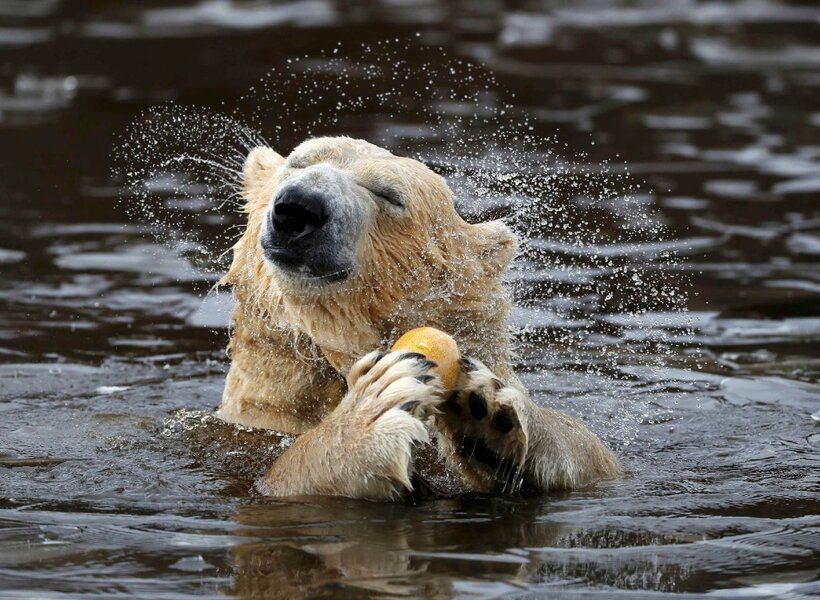Study: Polar bear numbers could plummet by midcentury
Loading...
New research from the US Fish and Wildlife Service in Anchorage, Alaska, predicts that the global population of polar bears, estimated at 26,000, will decline by 30 percent over the next 35 years due to melting Arctic ice.
The study, which was published in the Royal Society Biology Letters, was lead by biologist Eric Regehr, whose team determined that there is a 70 percent chance this significant decline will occur by 2050.
“Polar bears (Ursus maritimus) depend on sea ice for most aspects of their life history,” the researchers wrote. “Anthropogenic climate change is the primary threat to the species because, over the long term, global temperatures will increase and Arctic sea ice will decrease as long as atmospheric greenhouse gas concentrations continue to rise.”
Polar bears use sea ice as a platform from which to hunt seals, which are the bears’ main source of food but can outswim them in open water.
Brenda Ekwurzel, the director of climate science for the Union of Concerned Scientists, in Washington D.C., told the Monitor that “atmospheric temperatures are rising because of heat-trapping gases in the atmosphere so we have overloaded our atmosphere with carbon, so the air temperatures are warmer, which in turn can raise temperatures above the freezing point and melt the ice from above.”
As a result of this process, October and November saw the lowest sea ice extent ever registered in both the Arctic and Antarctic, according to the US National Snow and Ice Data Center.
To determine how this diminishing sea ice will affect polar bear populations, Dr. Regehr used three different population models. The first assumed proportional population and sea ice decline across all polar bear communities and habitats. The other models factored in how 19 specific bear populations have adapted to sea ice melt over the last decade, using 35 years of satellite data from four different “eco-zones.”
By averaging the three predictions, the team determined that there is a 70 percent chance that the global polar bear population will decline by 30 percent by the middle of the century.
But melting sea ice has already created significant challenges for polar bears. They have had to add new staples to a diet that had consisted mostly of seals, and some scientists have looking into if, in the absence of sea ice, the bears could survive on an entirely terrestrial diet.
Increasingly, the bears are attempting dangerous long-distance swims, sometimes swimming for days on end without food to reach habitable ice from which they can hunt.
"Ice is changing so quickly that we're finding the bears are getting caught in places where they're finally coming to the realization, 'I just can't stay here,'" Andrew Derocher, a researcher at the University of Alberta who co-authored the study, told The Washington Post. "These kinds of long-distance swims are not what they evolved to undergo."








